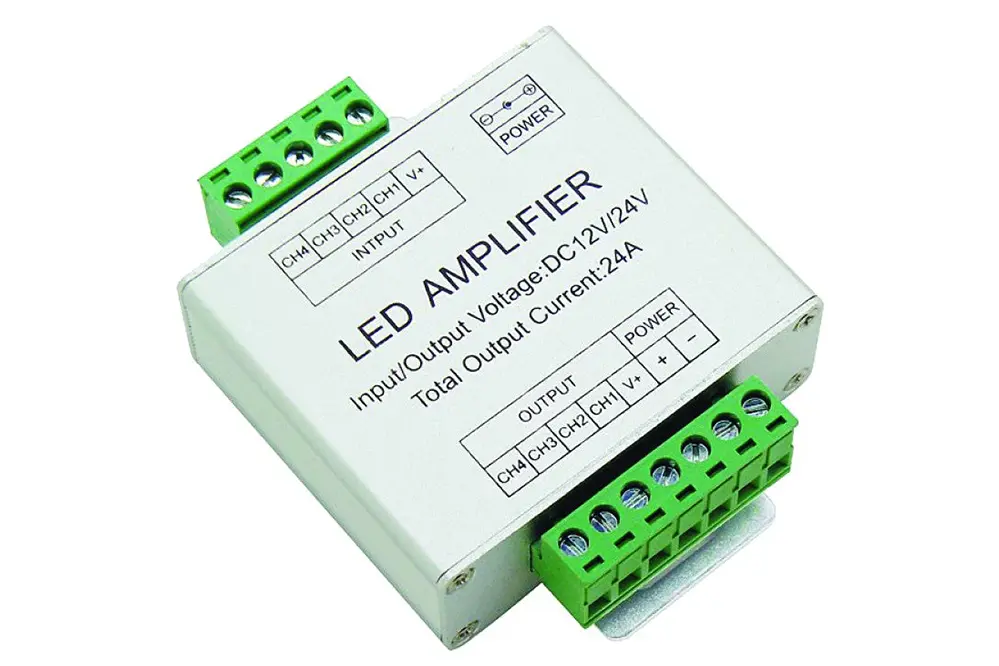LED strip lights are rapidly transforming homes and workplaces with their versatility and energy efficiency. Their seamless integration into various settings has captivated both designers and homeowners alike.
However, expanding their functionality requires additional tools.
Learning how to use LED strip light amplifiers can enhance the brightness and length of your lighting displays, offering endless creative possibilities.
Understanding LED Strip Light Amplifiers
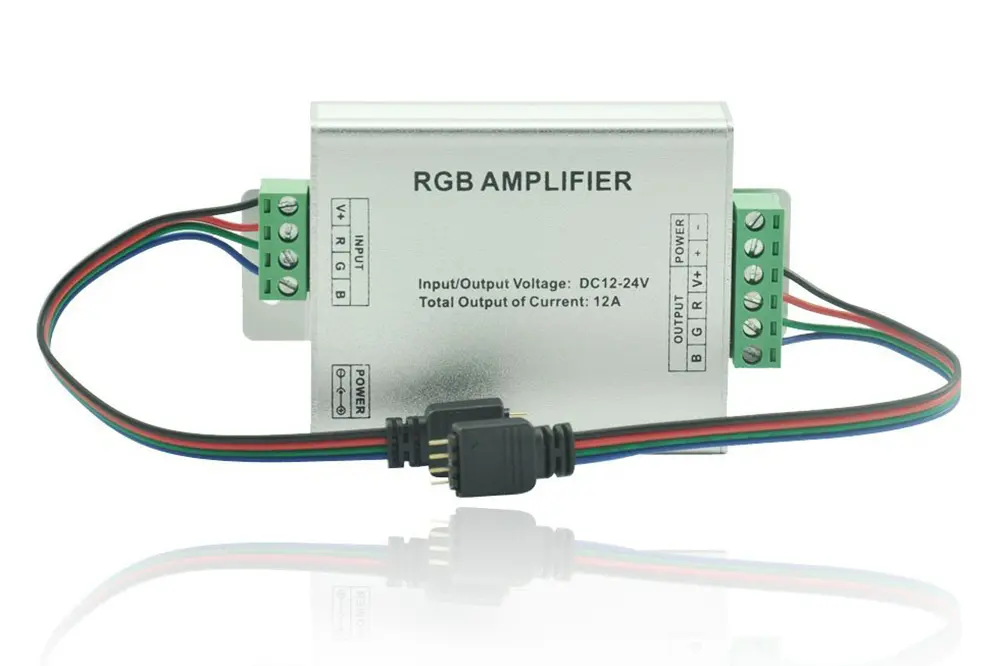
LED strip light amplifiers are vital components.
They serve a crucial role in extending the reach of LED strip light installations. When long strips of LED lights are employed, the voltage drops can cause inconsistencies in brightness. Consequently, amplifiers act as stabilizers, ensuring the steady and consistent illumination of LED lights.
The need for amplifiers grows with longer lighting setups.
LED amplifiers function by replicating and boosting the signal. As the voltage reduces along the strip, amplifiers take the diminishing signal, amplify it, and push it onward to ensure that the LEDs at the far end receive enough power. This makes them indispensable for elaborate lighting projects.
Through understanding LED strip light amplifiers, individuals can discover inspiring lighting solutions, turning their creative visions into bright, consistent realities. Utilization of these amplifiers can unlock new dimensions in lighting design, ensuring every project, regardless of scale, shines with unwavering brilliance.
Why You Need an LED Strip Light Amplifier
LED strip light amplifiers ensure that your lighting installations remain both vivid and consistent, no matter the length of the setup.
They are indispensable for large-scale installations spanning several inches to feet.
Without an amplifier, voltage drops can diminish the brightness and overall performance of the lights, leading to an unsatisfactory result.
Employing an LED strip light amplifier not only enhances the visual impact but also safeguards the longevity of your installations. By stabilizing the voltage and redistributing power evenly, these amplifiers enable more dynamic, creative lighting designs. This translates into eye-catching, professionally executed projects that stand the test of time.
Types of LED Strip Light Amplifiers
Understanding the variants can streamline project planning.
Fundamentally, amplifiers for LED strip lights fall into three broad categories. The first category consists of signal amplifiers, which are utilized to extend the control signal over longer distances without degradation. Essentially, they act as intermediaries, ensuring consistent signals throughout extended setups. Signal amplifiers are vital when the aim is to maintain uniform brightness and color across expansive installations.
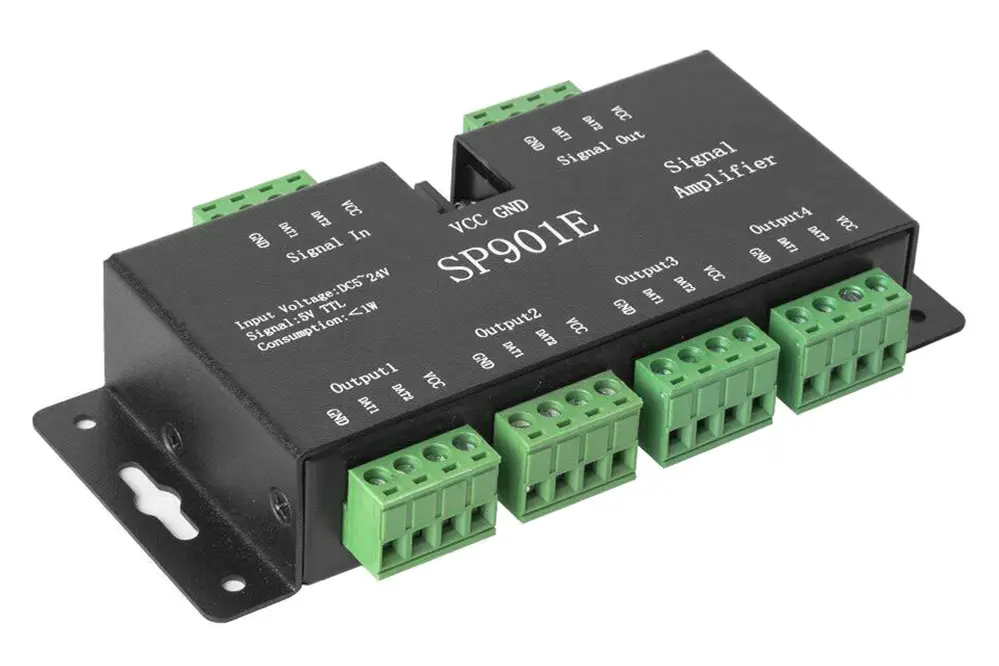
Power amplifiers focus on boosting the power output.
Often employed in setups that require high luminosity, they work by supplying additional power to LED strips, thereby preventing voltage drops. Whether it’s a large commercial space or an intricate home installation, these amplifiers ensure each segment of the strip receives adequate power.
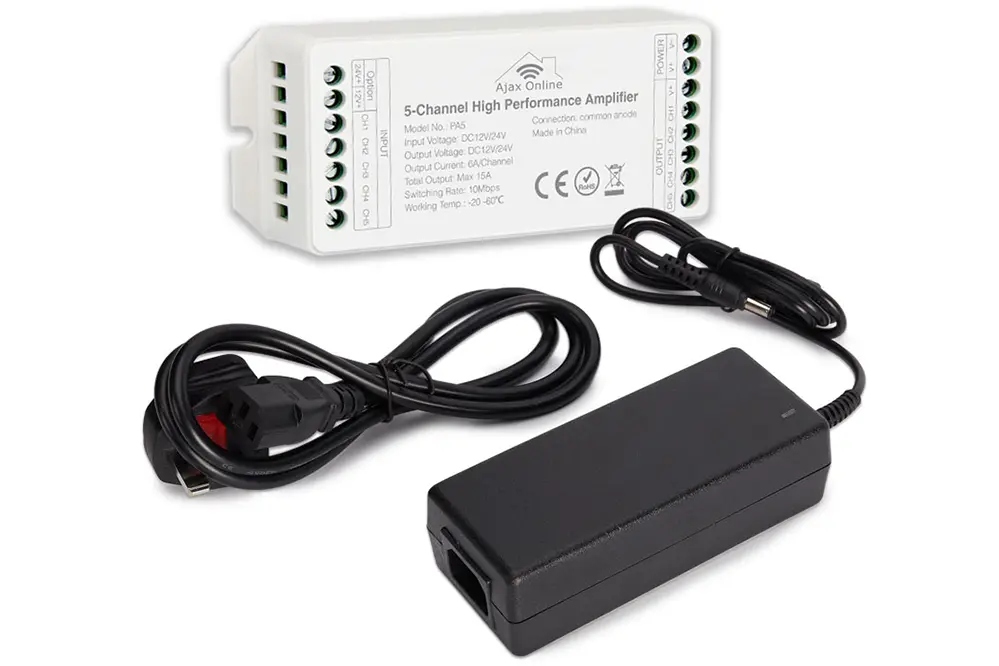
Lastly, RGB amplifiers cater to dynamic lighting.
These sophisticated devices are essential for installations involving multiple colors, allowing distinct RGB channels to maintain their intensity and hue. By balancing the power across different color channels, RGB amplifiers guarantee that lighting patterns are rendered accurately, which is crucial for both decorative and functional applications.
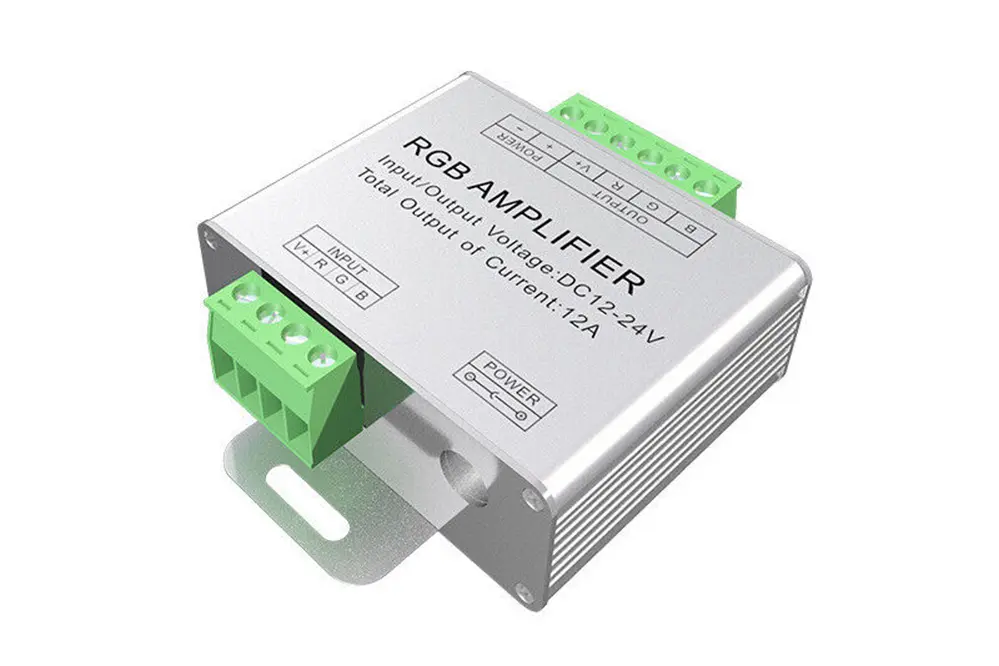
Incorporating the right type of amplifier, tailored to the specific needs of a project, can significantly enhance the overall efficacy and visual appeal of an LED strip light installation.
Choosing the Right LED Strip Light Amplifier
When it comes to optimizing LED strip lights, choosing the right amplifier can make all the difference in achieving brilliant results.
Firstly, it is essential to assess the specific needs of a particular installation. Understanding the overall power requirements, length of the LED strips, and desired brightness will help in selecting the appropriate amplifier. Consider the power output capacity, compatibility with the LED type, and the ability to maintain steady illumination across the entire installation.
Additionally, ensure that the chosen amplifier is of a reputable brand. In today’s market, there exists a myriad of options, but high-quality amplifiers, though possibly more costly, offer greater reliability and longer service life. Trusted brands will also typically provide better customer support and warranties.
By taking these factors into account, one can confidently invest in an amplifier that meets all the technical specifications and enhances the brilliance of the lighting setup. This informed choice not only guarantees a seamless integration but also ensures the longevity of the overall installation, delivering captivating and enduring luminosity.
Tools and Materials Required
Before embarking on the journey of using LED strip light amplifiers, one must gather various essential tools, ensuring a seamless installation and optimal functionality, thereby achieving the desired dazzling effects.
It is crucial to have a soldering iron.
This tool is indispensable for making secure and precise electrical connections between the LED strips and the amplifiers.
A wire stripper is also necessary.
This ensures cleaner cuts and proper preparation of the wires for connection to the amplifier, promoting a stable circuit.
High-quality electrical tape, heat shrink tubing, and connectors are paramount in protecting and organizing the wiring setup, mitigating the risk of short circuits.
Lastly, consider an appropriate power supply that matches the voltage and current requirements of the LED strips to ensure consistent lighting performance and prevent any potential damage to the setup.
Safety Precautions
Safety is paramount when working with LED strip light amplifiers.
Firstly, ensure that the power supply is off before beginning any installation. The risk of electric shock or short circuits is a serious concern, and taking this fundamental step mitigates such dangers. Additionally, working in a dry environment will further reduce the likelihood of accidental electrocution or damage to the components.
Always wear protective gear.
Gloves and safety goggles are recommended – they can protect your hands and eyes from any accidental cuts or burns that might occur during the installation process.
Make use of proper insulation techniques to prevent wires from coming into contact with each other. This will guard against short circuits and possible fires, ensuring a safe and efficient lighting setup.
By adhering to these critical safety precautions, individuals can confidently and securely indulge in the creativity and excitement that LED strip light amplifiers bring to their spaces.
Preparing Your LED Strip Lights
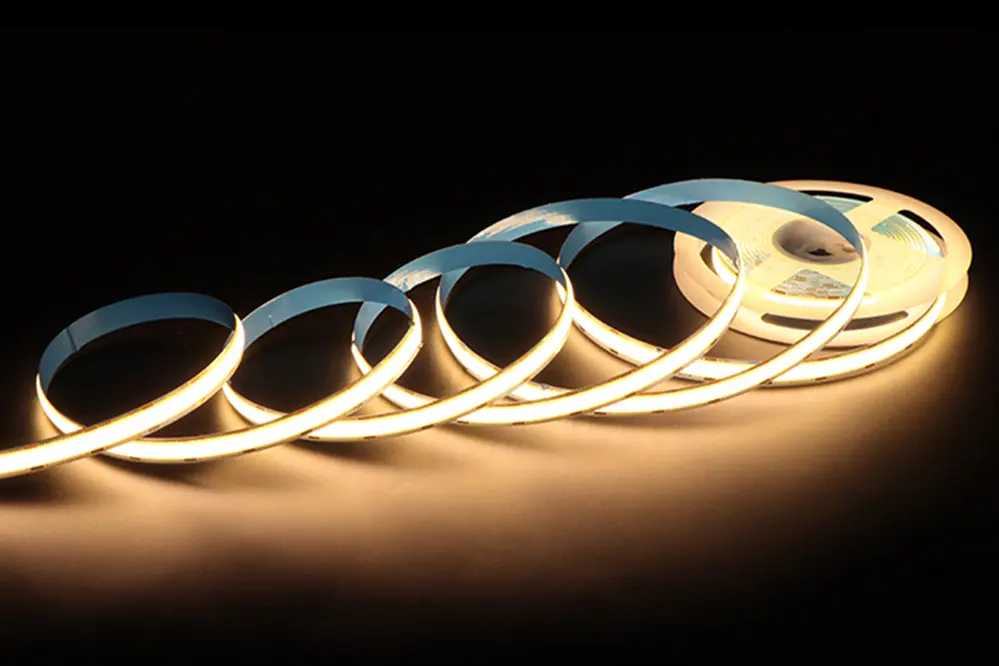
Before diving into the technicalities, it is essential to have all the necessary components.
LED technology, a marvel in modern lighting innovation, has revolutionized homes, offices, and even outdoor spaces by offering versatile lighting options.
It’s crucial to know that LED strips come in various lengths and colors, making it imperative to plan the layout meticulously. This ensures one achieves the intended aesthetic and functional results.
Begin by measuring the desired area, taking note of the lengths needed. It’s typically advised to add an extra 3 to 5% to your measurements to accommodate for any discrepancies or bends, ensuring thorough coverage.
Preparation will save time and ensure the project progresses smoothly and efficiently.
Connecting the Amplifier to the Power Supply
First, ensure that all devices are unplugged to avoid any electrical hazards.
Next, identify the correct voltage rating required by your LED strip lights.
Once the voltage rating is confirmed, connect the amplifier’s power input to the designated power supply using the appropriate connectors. Attention to polarity, matching the positive and negative leads correctly, is essential for the amplifier to function correctly and to avoid potential damage.
Finally, verify the connections are secure and insulated to prevent short circuits. This step is crucial for ensuring a stable and reliable energy flow to the amplifier. Once double-checked, switch on the power supply to initiate the lighting system, basking in an illuminated ambiance that reflects careful planning and unparalleled execution.
Wiring the Amplifier to LED Strip Lights
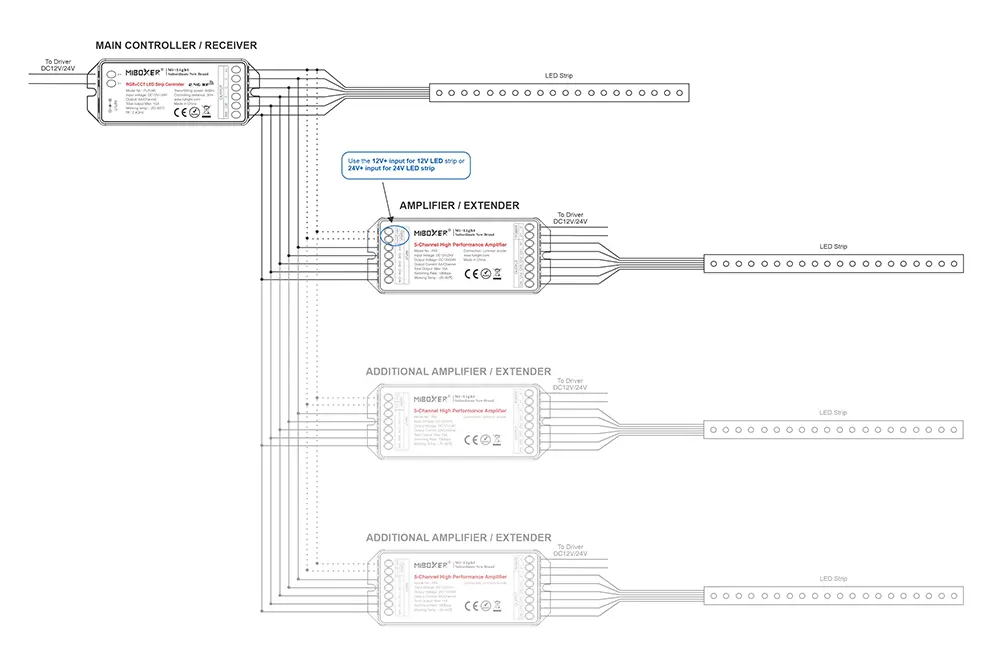
Before beginning, gather all necessary tools and components, ensuring an uninterrupted workflow throughout the process.
Identify the input and output terminals on the amplifier, which are generally labeled for clarity. The input terminal receives the signal from the controller, while the output terminal connects to the LED strip lights.
Measure the length of the wire required to connect the amplifier to the LED strip lights, and cut it accordingly. Stripping a small section of insulation from the wire ends will facilitate a secure connection.
With precision, attach the input wires from the LED controller to the input terminals on the amplifier, ensuring the polarity matches. Likewise, connect the output wires from the amplifier to the corresponding terminals on the LED strip lights.
Once secure connections are made, double-check the entire wiring setup for any loose connections or potential shorts. Ensuring everything is correctly in place will optimize the performance and longevity of the lighting system.
Configuring Multiple LED Strip Light Amplifiers
Configuring multiple amplifiers requires careful planning.
Firstly, determine the total length of the LED strips. They should account for both the primary lighting requirements and any aesthetic preferences, such as accent lighting. Once the total length is calculated, identify adequate amplifier positions to ensure consistent signal strength. Strategically placing the amplifiers helps in preventing any drop-off in brightness.
Remember to check the amplifier specifications.
Ensure all amplifiers have a common power source. This not only ensures uniform brightness across all connected strips but also simplifies the wiring process. However, take care not to overload any single power supply by calculating the total power draw.
When connecting the amplifiers, follow the manufacturer’s instructions meticulously. Leverage high-quality connectors to secure the wires effectively and reduce the risk of disconnections. Engaging in a systematic approach to wiring, one step at a time, will yield the most reliable results.
Ultimately, their meticulous attention to detail will illuminate their setup with a brilliance that endures. By mastering how to use LED strip light amplifiers, anyone can transform their space into a luminous haven, seamlessly integrating technology and aesthetics.
Testing Your Setup
Testing ensures that every component works perfectly before finalizing the installation of LED strip light amplifiers.
Firstly, an initial inspection involves connecting a single power source and verifying each individual strip lights up correctly. This initial step validates that the connections are secure and the amplifiers are functioning as intended. Detecting and addressing minor issues at this stage can prevent complications during full-scale deployment.
Next, they should perform a continuity test on all connections. This test entails checking that there is a consistent electrical flow throughout the entire circuit. Verifying continuity is crucial, as it identifies any dropped connections or excessive resistance points that could impede performance.
Finally, after ensuring everything is connected and functioning, the entire setup should undergo a stress test. During this test, the setup is left operating at full capacity for an extended period, confirming its durability under long-term use. This demonstrates the system’s resilience and readiness for continuous operation, ensuring reliability and brilliance in their design.
Troubleshooting Common Issues
Despite meticulous setup, users may encounter issues requiring additional troubleshooting.
One common problem is flickering lights, which can often be traced back to voltage drops along the strip. This situation can be mitigated by ensuring that power is evenly distributed and amplifiers are correctly placed at appropriate intervals, maintaining a consistent current flow.
Another typical issue is uneven brightness across the strip. This discrepancy is usually due to inadequate power supply or poor connections. Users should inspect power supply ratings and verify connections, ensuring each segment receives adequate power for uniform light emission.
Lastly, if a section of the strip fails to light up, it might indicate a severed connection or a faulty amplifier. Identifying these sections and rechecking wiring or replacing the amplifier is crucial. Utilizing proper tools and systematic approaches can swiftly resolve these complications, enabling the successful and radiant deployment of LED strip lights.
Maintenance Tips for LED Strip Light Amplifiers
To keep LED strip light amplifiers functioning optimally, regular maintenance checks should not be overlooked.
Firstly, it is vital to ensure all connections remain secure and free of corrosion, which can impair the performance. A routine inspection, ideally every few months, can help identify loose wires or signs of corrosion early on, preventing potential issues down the line.
Additionally, dust and debris might accumulate on the strips and amplifiers, affecting their efficacy. Cleaning the surfaces with a soft, dry cloth ensures optimal light transmission and amplifier performance, fostering a consistently bright and even illumination.
Regular firmware updates, if applicable, further bolster the reliability of modern LED systems equipped with advanced features. Keeping the software up-to-date ensures compatibility with new technologies and fixes potential bugs, thereby maintaining a stable and efficient lighting system. Through these proactive measures, users can extend the lifespan and enhance the performance of their LED strip light amplifiers.
Enhancing Your Lighting Design with Amplifiers
Transform your space with striking visuals by harnessing the potential of LED strip light amplifiers.
Recent years, LED technology’s rapid advancements have made amplifiers indispensable in achieving intricate light designs for homes, offices, and event spaces.
With these devices, they can extend beyond a single power source’s capacity, effortlessly brightening vast areas and creating uniformity across complex installations.
Such an advantage is paramount in settings requiring continuous LED strips spanning more than 32 feet, ensuring consistent brightness and preventing power loss, maintaining aesthetic integrity.
By embracing amplifiers, one can elevate their lighting projects, blending functionality with visual appeal effortlessly.
Frequently Asked Questions on Using LED Strip Light Amplifiers
What exactly is an LED strip light amplifier, and how does it function in the lighting system?
An LED strip light amplifier enhances the power supplied to the LED strips, ensuring consistent brightness across extended installations. It essentially re-amplifies the signal and voltage.
Can an amplifier be used with any type of LED strip, or are there specific compatibility requirements?
Yes, it’s critical to check that the amplifier’s specifications match those of the LED strip. Most amplifiers support various types, but reviewing compatibility ensures optimal performance.
Where should the amplifier be placed within the LED strip installation to achieve the best results?
Place amplifiers at intervals determined by the power requirements and length of the LED strips. Commonly, they are inserted every 32 feet or in line with the manufacturer’s recommendations.
How many LED strip light amplifiers will an extended lighting project typically require?
The number of amplifiers needed depends on the total length and power consumption of the LED strips. Calculating power drops and voltage limits helps in determining the exact requirement.
Conclusion
Understanding how to use LED strip light amplifiers is crucial for advanced lighting projects. Proper placement and usage ensure consistent brightness and performance, enhancing the functionality and lifespan of LED strips. Ensuring compatibility and meticulous power planning are key to avoiding issues and achieving optimal results. By strategically incorporating amplifiers, ambitious lighting projects can reach their full potential, delivering impressive and reliable illumination.
